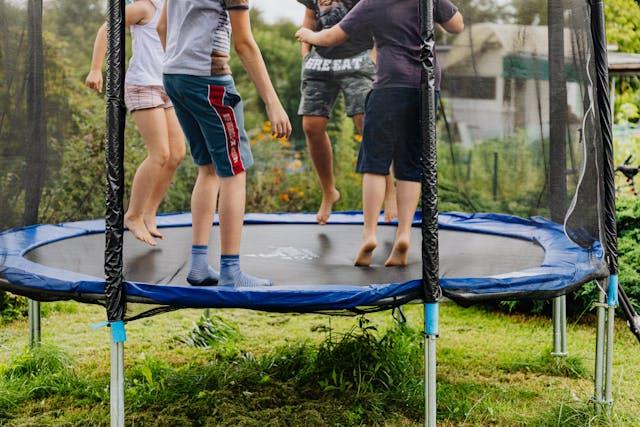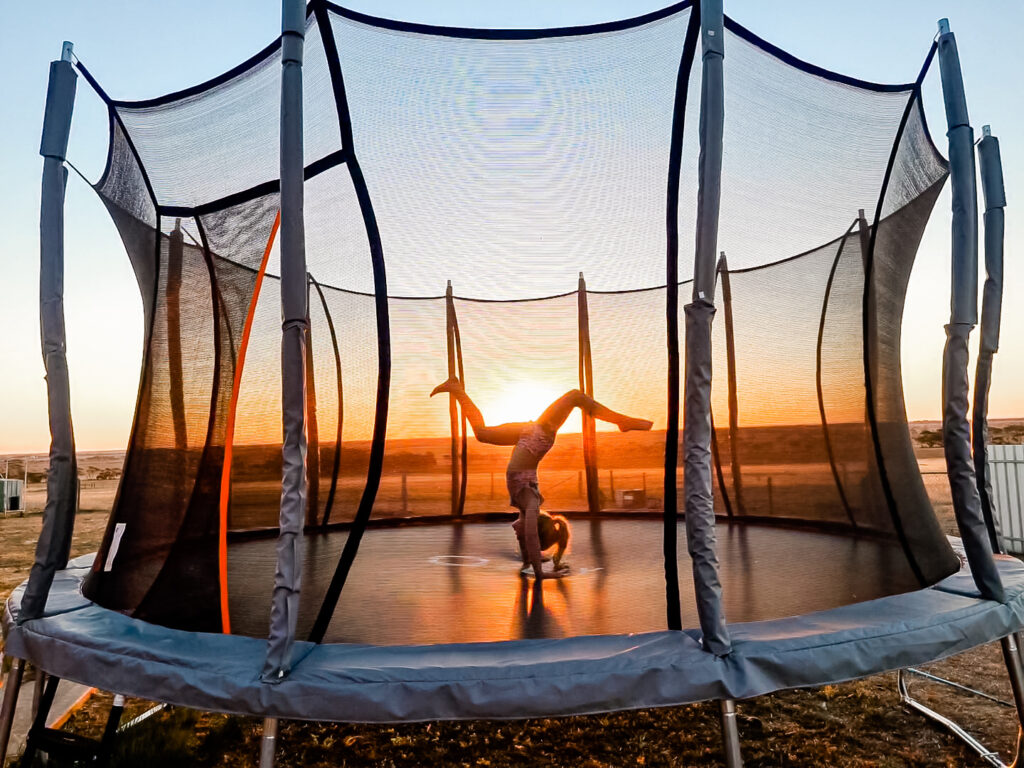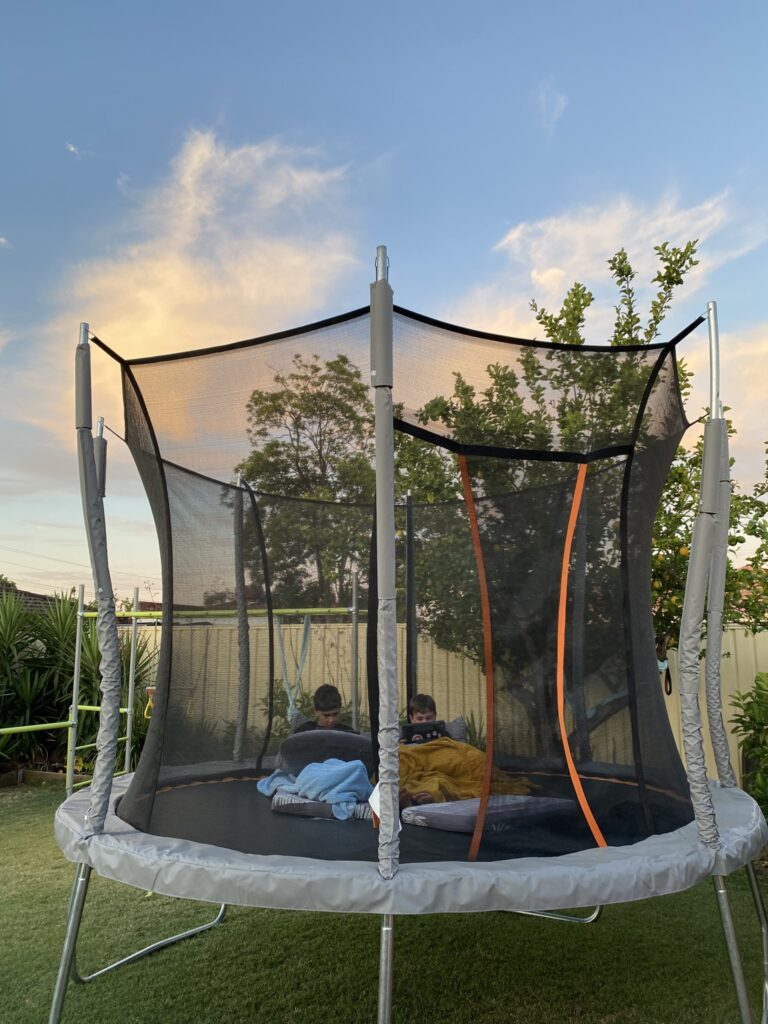Discover essential trampoline safety tips and the numerous benefits of owning a trampoline. Learn how to maximize fun while minimizing risks for all ages.
The following is a guest post from my bloggy friends over at Vuly. Interested in having a guest post on my website? Click here for my guest post submission form.
Bounce Safely: A Comprehensive Guide to Trampoline Safety and Benefits
Trampoline is one of the most entertaining and physically engaging means of recreation and can hardly be compared with anything else. For a kid, and even for the kid in all of us, it is fun to jump up in the sky regardless of how little time we spend in the air. However, like with every work connected with a particular exerted effort and specific danger, safety must be considered. In this article, the author explains what a trampoline is, some safety measures anyone should constantly observe, and the advantages of having a trampoline.
What is a Trampoline?
A trampoline is a mechanism that is comprised of a piece of stiff and elastic fabric stretched over a metal framework and hinged using many helical springs. The fabric is not rubber like in a trampoline; this layer is usually called the trampoline bed or bounce mat. In this form, the fabric is not elastic; the springs between the bed and the frame perform this role. They contain potential energy released when the jumper’s weight compresses them. Today, trampolines can be categorized as big individual rebounders and small backyard trampolines that accommodate several people simultaneously. Trampoline has been around for decades, beginning in the early 1900s; initially, the trampoline was only used as training equipment by gymnasts and divers. Trampolines, as recreational equipment, have gained mainly popularity over the years and are now famous for the fun and exercise they give people.
Trampoline 101: Safety Measures and Surprising Advantages for Your Family
1. Choose the Right Location: Your trampoline should be set up on a flat surface; this is where you need to ensure the ground is level. It is necessary to clear the space around the trampoline of trees, fences, or other pieces of furniture. This will help minimize the risk of an accident if anyone jumps off the trampoline.
2. Install Safety Enclosures: A net or an enclosure of the trampoline is required. These nets help to prevent the jumper from falling away from the trampoline on the surfaces beneath, which could cause harm.
3. Inspect Regularly: First, always inspect the trampoline for any signs of damage before each activity. Seek for protruding springs, ripped fabric, and damage to the framer. By performing routine maintenance, people’s lives, loss, time, and property can be saved from the risk posed by faulty equipment.
4. Limit the Number of Jumpers: The only jump should be made by one individual at a time. When more jumpers are on the screen, there are more chances of colliding, resulting in injuries. In cases where more than one person wants or has to be on the trampoline simultaneously, all of them must be close to the same weight.
5. Set Rules and Supervise: A clear set of guidelines regarding trampoline usage should be set, such as no free folding or springing and no somersaults if not trained in gymnastics. Ensure that children are always watched while on the trampoline, especially as they jump to conform to the set rules.
6. Use Padding: Safety pads should cover the springs and the frame well. These pads are important because if a person falls or/bounces on either of the edges of the trampoline, they can be protected.
7. Proper Attire: Jumping people should ensure they are well dressed. Eliminating rings, pocket knives, or other sharp items may be required to prevent causalities. Perfect footwear is non-slip or no socks so that one does not slip and fall.
8. Stay Hydrated and Rested: Expanding the balance skills taxonomy: physical benefits of bouncing on a trampoline. Ensure that everyone works, drinks water, and has time to rest since tiredness is dangerous and can make individuals make mistakes.
9. Consider Weather Conditions: This trampoline should not be used during rainy or windy weather to prevent injuries. The mat is likely slippery if wet, which may lead to patients slipping off the bed. When twister speeds are high, such an activity as jumping can become rather unsafe.
10. Teach Proper Techniques: Brief jumpers on the correct procedures when touching the ground. For instance, stretching the legs in a manner that involves bending knees helps lessen the force of impact on one’s body.
Why You Should Get a Trampoline
1. Physical Fitness: Trampoline exercise can be widely defined as an aerobic exercise. It tones up the heart muscles, and the lung boosts circulation, physical coordination, and balance. This is based on a survey done by Sky Zone, which reveals that trampolining affects the same level as running while exercising but with little pressure on the bones.
2. Mental Health Benefits: Being on a trampoline has benefits in that it helps to release endorphins in the body and assists in making people feel more happy and less stressed out. Whistling can be done while performing various chores during the day, and this is a form of exercise generally known to impact one’s mental state positively.
3. Family Fun: Trampolines are great fun, and it becomes very convenient when family members exercise together or jump around together. It presents an opportunity to engage in an outdoor game where users will be forced to leave their devices behind.
4. Development of Motor Skills: In the case of children, trampoline exercises assist in physical dexterity, balanced movement, and body control. It comes in fun formats that can be used to enhance physical skills, which are essential for growth.
5. Rehabilitation and Therapy: It is worth stating that trampolines are rarely utilized in traditional rehabilitation or physical therapy. They help by providing training facilities for a low-impact sport that may aid in the disability and treatment of injury and help in balance and coordination.
6. Versatility in Exercise: Besides jumping and rebounding, trampolines offer many advantages, such as cardiovascular activities, muscular strength training, and flexibility exercise. These characteristics make the device an essential tool in any workout plan.
7. Accessibility: Today, trampolines are manufactured in various sizes and at various costs, thus catering to individuals of all classes. Whether you own a small backyard or an extra-large one, a trampoline awaits you within your size and price range.
8. Indoor Options: In case a sizable yard or garden area is unavailable, there are indoor small trampolines or rebounders. These offer similar fitness gains to the treadmill workout and can be done any time of the year, weather permitting.
Trampolines Can Be Fun When You Use Them Safely
I consider trampoline more than mere entertainment because it has many advantages apart from being enjoyable. However, you should be constantly aware of safety needs as no one is protected from an accident. As you have seen earlier, it is straightforward to take adequate measures towards your trampoline and make it safe to maximize its benefits, including fun and exercise. Thus, if you aim to enhance your experiences in fitness programs, want to have a good time with your family, or are researching a new and fresh form of exercising at home, a trampoline can be the best solution.
Written by Taylor McKnight, Author for Vuly








